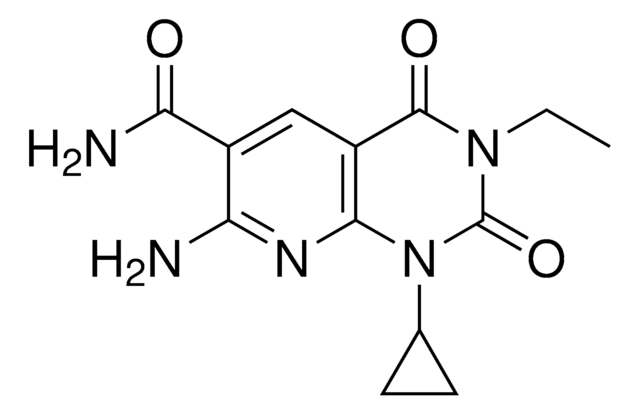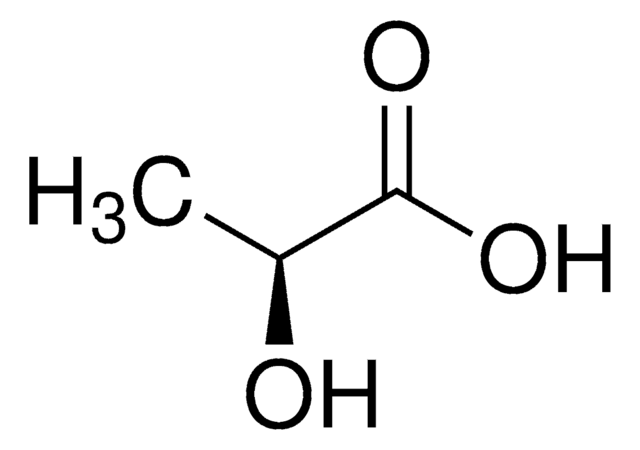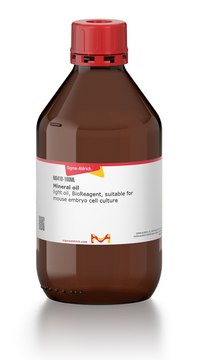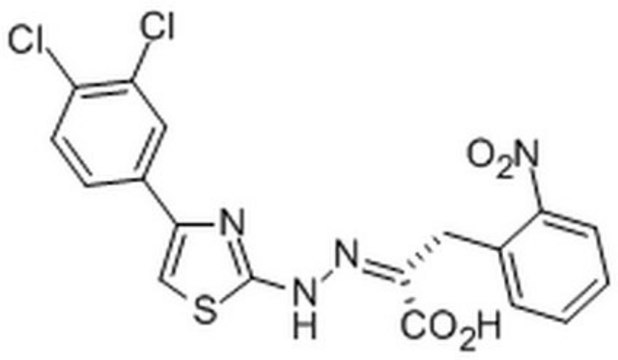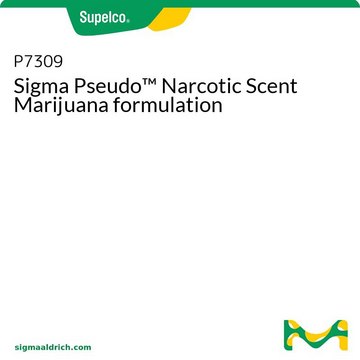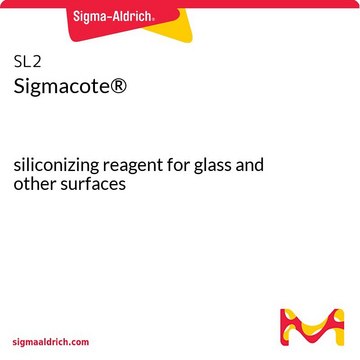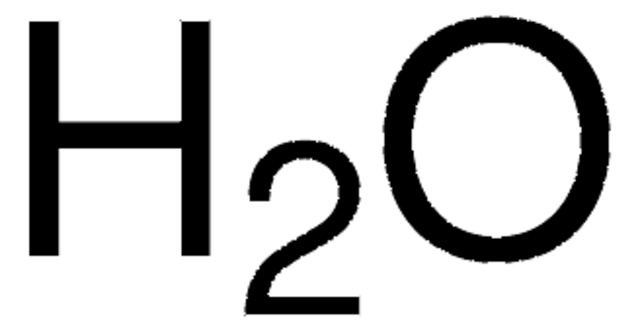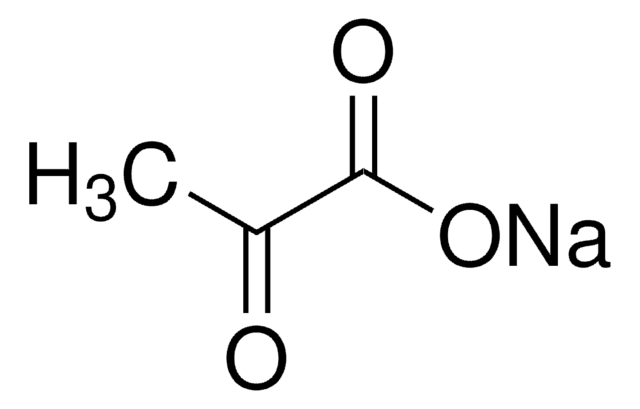324517
eIF4E/eIF4G Interaction Inhibitor, 4EGI-1
The eIF4E/eIF4G Interaction Inhibitor, 4EGI-1, also referenced under CAS 315706-13-9, controls the biological activity of eIF4E/eIF4G interaction. This small molecule/inhibitor is primarily used for Phosphorylation & Dephosphorylation applications.
Synonym(s):
eIF4E/eIF4G Interaction Inhibitor, 4EGI-1, 2-((4-(3,4-Dichlorophenyl)-thiazol-2-ylhydrazono)-3-(2-nitrophenyl))propionic acid, eIF4F Inhibitor I
About This Item
Recommended Products
Quality Level
Assay
≥98% (sum of two isomers, HPLC)
form
solid
manufacturer/tradename
Calbiochem®
storage condition
OK to freeze
protect from light
color
yellow
solubility
DMSO: 100 mg/mL
shipped in
ambient
storage temp.
2-8°C
InChI
1S/C18H12Cl2N4O4S/c19-12-6-5-10(7-13(12)20)15-9-29-18(21-15)23-22-14(17(25)26)8-11-3-1-2-4-16(11)24(27)28/h1-7,9H,8H2,(H,21,23)(H,25,26)/b22-14+
InChI key
KFRKRECSIYXARE-HYARGMPZSA-N
General description
Packaging
Warning
Reconstitution
Other Notes
Legal Information
Storage Class Code
11 - Combustible Solids
WGK
WGK 3
Flash Point(F)
677.1 °F - (calculated)
Flash Point(C)
358.4 °C - (calculated)
Certificates of Analysis (COA)
Search for Certificates of Analysis (COA) by entering the products Lot/Batch Number. Lot and Batch Numbers can be found on a product’s label following the words ‘Lot’ or ‘Batch’.
Already Own This Product?
Find documentation for the products that you have recently purchased in the Document Library.
Our team of scientists has experience in all areas of research including Life Science, Material Science, Chemical Synthesis, Chromatography, Analytical and many others.
Contact Technical Service